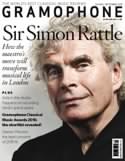Texte paru dans: / Appeared in: |
|
|
Outil de traduction (Très approximatif) |
|
|
Reviewer: Jonathan Freeman‑Attwood
Masaaki Suzuki may have completed his distinguished 20-year traversal of the sacred cantatas but there are, thankfully, some additional vocal works – secular and Latin works especially – of which the first of two volumes of the short Lutheran Masses, in G minor and G major, launches a new miniseries of miscellany. Additional Mass movement settings, of various degrees of obscurity, contribute to the interest.
The four Masses were assembled from the cantatas, a repository for a significant proportion of the Mass in B minor also. The difference is that early Bach criticism considered it a legitimate practice for the ‘Great’ Mass but misplaced pragmatism by the composer in the smaller works (which, according to Lutheran practice, set only the Kyrie and Gloria in Latin). A clutch of exceptional recordings of the Masses – among which those by Herreweghe, Christophers and Pichon stand out – has instead promoted the view that Bach’s parody techniques and alteration, transformed from poetic imagery to the generic Ordinary of the Mass, are often rather brilliant. Comparing Suzuki’s cantata performances (namely movements from Nos 187, 72, 102, 179, 79, 17 and 138) with these Mass settings reveals the deft way in which Collegium Musicum Japan have avoided the kind of rhetorical signposts of the originals. Some may find the G minor Mass a little too humdrum in its relaxed everyday liturgical ritual but the G major offers a sophisticated and unhurried exegesis of spiritual journeying (of which Suzuki is a true master), not merely a lush stile antico abstraction.
Suzuki’s solo ‘A team’ are out in force and generally deliver excellent and communicative quasi-arias, though Gerd Türk sounds uncomfortable at times in the ‘Quoniam’ of the G major. The choruses are perhaps a touch less well-heeled and defined than usual, in both consistency and balance, but Collegium Musicum Japan compellingly advocate both Masses as well as the festive Kyrie and Sanctus settings. The latter are mostly short arrangements by Bach of ready-made German and Italian models, casting light on the practical needs of a busy town church and the Cantor’s natural proclivities for serving it. Roll on Vol 2.
|
|
|
|
|
|
Cliquez l'un ou l'autre
bouton pour découvrir bien d'autres critiques de CD |
|

/7318599920818.jpg)


